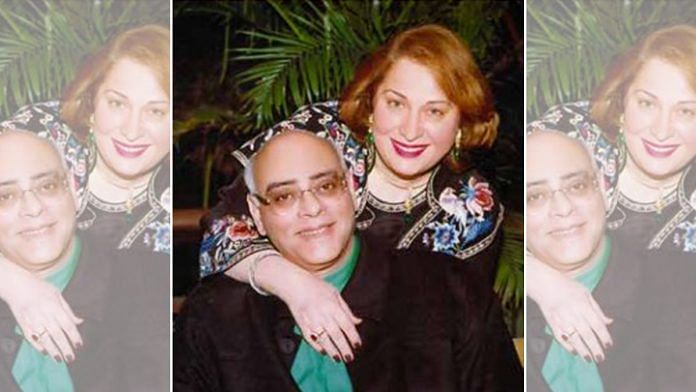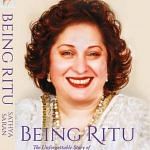
Thanks to the high spirits and economic uplift that followed the Second World War, Americans had started looking at their homes as complete units, where aesthetics and comfort would go hand in hand. The emergence of the ‘pink kitchen’, where the lady of the house, who still believed in turning out steaming-hot food to lay on the family table, ensured she had a clean, roomy and airy working space that made cooking less a chore and more of a joy.
Perhaps inspired by the colour-coordinated kitchen spaces with neatly stacked appliances in place for easy access, Ritu decided she could do her bit to change Indian kitchens too. Till then, kitchens in Indian homes were neglected spaces, relegated to the woman of the house or her servants; often dingy and smoky, or, at best, barely serviceable if equipped with a gas stove and cylinder.
As Kuppy remembers it, Ritu was cooking one evening, as she liked to do sometimes, when the gas ran out. ‘How wonderful if we could have an electric oven on standby in the same place’, she mused. The cooking range which incorporated an oven grew from this incident.
Combining the many aspects of cooking that included cooking multiple dishes with the fact that many urban Indian women were also venturing into making baked dishes for special occasions, or baking cakes, Ritu conceptualized the multi-appliance kitchenette that would combine multiple gas or electric burners with an oven. Besides its utility, it was aesthetically a conversation piece; something that demanded the kitchen be upgraded to accommodate its good looks and functions.
Combining the names of her children, Nikhil and Nitasha, the fond mother named her new baby, Niky Tasha. ‘We started with manufacturing just the two-burner chulhas,’ Bhalla remembers, ‘and started our brand. Soon we had tied up with Blue Star and Voltas, who gave us orders too for the same. They would put their labels and sell the products in the Indian market.
Also read: There was a premonition surrounding Sanjeev Kumar’s death. His friends and family knew
‘The cook-and-grill and cooking ranges followed. The white goods market was absent in the early 1980s. We explored it, adding mixers and grinders, a launderette and television sets too, later. We started branding the stuff we made in 1982.’ Conscious of the urban woman’s aspirations and psyche, Ritu positioned the Niky Tasha kitchenette at the upper-end consumer; it would be a prestige product that announced that the woman of the house was gadget savvy and more of a chef than just the home cook.
Nikhil Nanda describes his mother’s enterprise as a ‘garage concept with people creating sketches to create the shape of the product,’ that was started because ‘she wanted security for her children, wanted something she could secure for her children and herself too, independent of her husband’s company. It was a desire to also be able to provide for herself and her family. As a son, I see it as her desire to earn my father’s level of respect back, and one way to do so was to earn it as a credible business woman.’
He goes on to recreate her building of the start-up, step by slow but meticulous step: ‘Getting together and building a team, creating the team spirit, creating a vision for the company, and creating products with complete focus and dedication, it was her way of approaching her project that made it unique and successful’. As Nikhil puts it, she knew how to create the wow factor, and an emotional link, in everything she undertook in her business. Which is possibly why the Niky Tasha brand still lingers in public memory and in the mind of every person who worked with her on it.
‘My mother spared no effort,’ Nikhil continues. ‘There was a lot of programmes on television sponsored by Niky Tasha, among them, Zubin Mehta’s orchestra. And such was her passion and pride in what she had created and its success, she would take us to shops to see the display of the products and watch demonstrations.’
Ritu pushed the brand to innovate and venture further. Adding India’s first washing machine, tying up brands like Launderette, and colour television sets in collaboration with Grundig. Bhalla remembers they even had a ‘heat or chill’ product that could do either function by merely pressing a switch. Ritu spearheaded every one of these ideas, and ensured she knew every detail, from procurement to manufacture and delivery.
Sumit Pasricha, Rajan’s cousin, remembers how when he returned from the US where he lived, after a long hiatus that had been caused by ‘visa issues’, he has ‘a memory of seeing her as an entrepreneur as she took me around the Niky Tasha, factory for consumer electronics. I too became an entrepreneur with my own company in Silicon Valley—but it was a build-up of karma as I watched the Nanda family starting to realize Rajan had married an entrepreneur too.’
Also read: Forget Dil Chahta Hai, Raj Kapoor-Nargis starrer Chori Chori was the first road trip movie
Their interactions on future trips by Sumit would also make him marvel at Ritu’s many abilities. ‘I made a few trips to India, and interacted with her on graphics as I was developing graphics software for Adobe in the US, and she had the artists creating paintings for hotels. For me it was another impression of her entrepreneurial savvy. She was the only one in the family who had actually heard of Adobe! It was such a memorable impression; I thought, geez someone is interested!’
Shashikant Kapoor, who was at that time working with Doordarshan, remembers his first meeting with Ritu Nanda. In his words, ‘ I saw someone sitting on the steps of Mandi House, and she was looking distraught and I think she was crying. I bent down to ask her “Can I help you?’ She composed herself and I said: “Tell me, what can I do for you?” She said, “I want to advertise, sponsor a programme but nobody is telling me how to do it.” So I said, “Okay, come with me.” I took her to my room, gave her tea and she sponsored a programme with her product Niky Tasha.’ Ritu would also visit Kapoor’s family and develop a friendship with his wife, Indira Kapoor. Struck by her humility, Shashikant adds, ‘She could have had someone phone and everything would have been done for her, but this was her humility.’
The friendship with Indira would translate into the two families standing by each other in times of need. When Kapoor’s daughter had a sudden seizure and Ritu was fortunately around, it was she who spontaneously stuck her hand into the child’s mouth to ensure she did not bite her tongue, and rushed her to Escorts for a check-up the next day, despite the fact that the doctor had found nothing wrong with her on examining her on the day of the seizure. Indira Kapoor would, in turn, open a door for Ritu, much later, when the Niky Tasha story turned sour. Kapoor says that during their conversations, Ritu mentioned that she was going through a rough patch with Niky Tasha, ‘Indira said why don’t you become a life insurance agent? She was aghast and she said: “What will people say, how can I do this?” Indira said “No, do it—all you need to do is fill up the form and it costs ten rupees and start work.” I got a form and gave it to her and she signed it and she became an agent for the Life Insurance Corporation of India.
 This excerpt from ‘Being Ritu’ by Sathya Saran has been published with permission from Harper Collins.
This excerpt from ‘Being Ritu’ by Sathya Saran has been published with permission from Harper Collins.

COMMENTS